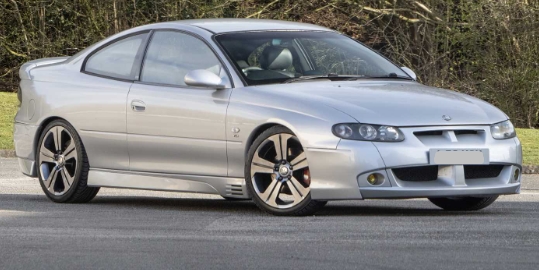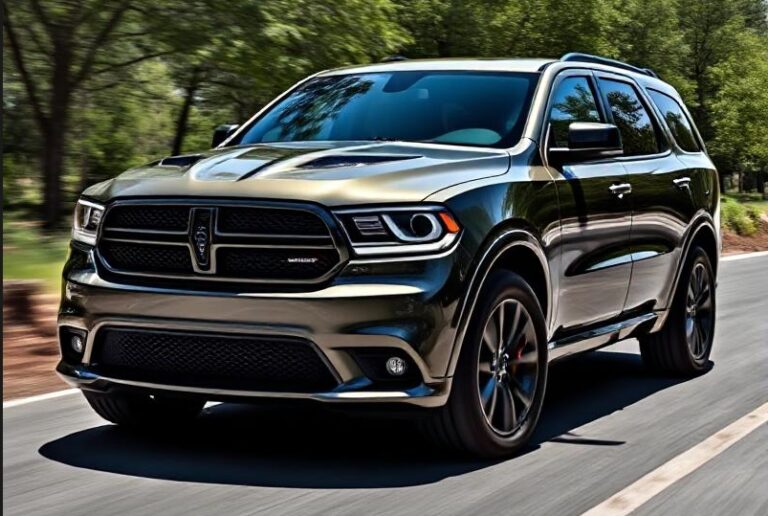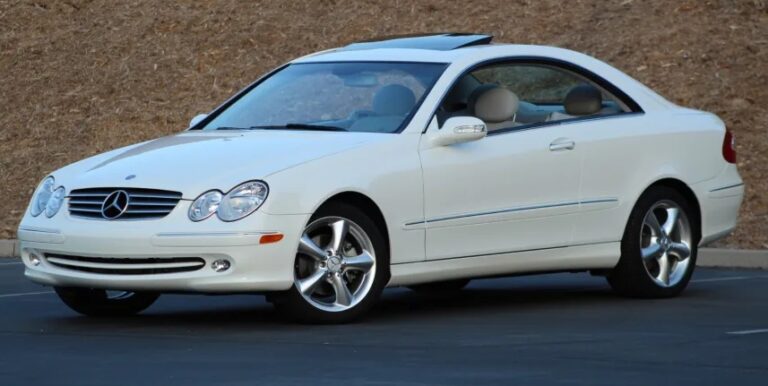From Humble Beginnings to Global Icon: The Evolutionary Journey of the Hyundai Santa Fe
The Hyundai Santa Fe. For many, it’s a familiar sight on roadways worldwide, a testament to Hyundai’s remarkable ascent from a budget-focused automaker to a global automotive powerhouse. But this mid-size SUV, now synonymous with practicality, comfort, and increasingly, sophisticated design, has a history that’s as much about evolution as it is about enduring appeal. Its story is one of strategic adaptation, responding to market demands, and consistently pushing the boundaries of what a mainstream SUV could offer.
The Genesis: First Generation (2001-2006) – The Bold Pioneer
Hyundai’s entry into the burgeoning SUV market was with the first-generation Santa Fe, launched in 2001. This was a bold move, aiming to capture a share of a segment dominated by established players. The Santa Fe was built on a unibody platform, a shared architecture with the Hyundai Sonata sedan, which helped keep costs down and offered a more car-like ride compared to traditional body-on-frame SUVs.
In terms of design, the first-gen Santa Fe was distinctive, if a little polarizing. It boasted a rugged, truck-like exterior with prominent wheel arches, a trapezoidal grille, and a relatively upright stance. The interior prioritized functionality and space, offering seating for five.
The initial model lineup in the US, for instance, typically featured two main trim levels:
- Base (or GLS): This was the entry-level offering, usually equipped with a 2.4-liter four-cylinder engine, front-wheel drive as standard, and optional all-wheel drive. Features were basic but functional, including air conditioning, power windows, and a CD player.
- Limited (or LX): This higher trim level offered more amenities, often including a more powerful 2.7-liter V6 engine as standard or an option, leather seating, a sunroof, and upgraded audio systems.
Engine options evolved slightly throughout the generation. Early models often featured a 2.4-liter inline-4 and a 2.7-liter V6. Later in the generation, a larger 3.5-liter V6 became available, offering more power for those seeking better performance. Transmission options were typically a 5-speed manual or a 4-speed automatic, later evolving to a 5-speed automatic.
Despite its somewhat unconventional styling and Hyundai’s then-developing reputation, the first-generation Santa Fe found a receptive audience. Its competitive pricing, generous warranty, and practical nature made it an attractive proposition for families and individuals looking for an affordable SUV. It laid the groundwork, proving Hyundai’s capability in a new and popular segment.
.
THIS could come in handy for your auto garage (and everywhere else!):

.
The Refinement: Second Generation (2007-2012) – Growing Up and Stepping Out
The 2007 model year marked a significant evolution with the introduction of the second-generation Santa Fe. This was a complete redesign, reflecting a more sophisticated approach to design and engineering. The styling became more streamlined and contemporary, losing some of the ruggedness of its predecessor in favor of a more car-like, aerodynamic silhouette. The grille became more prominent, and the overall proportions were more balanced.
Under the skin, the Santa Fe benefited from improved chassis dynamics and a more refined ride, thanks to its shared platform with the refreshed Hyundai Sonata. The interior also saw a substantial upgrade in terms of material quality, design, and available technology. It continued to offer seating for five passengers, but the feeling of space and comfort was enhanced.
The second generation saw a clearer distinction in engine offerings and trim levels, typically including:
- GLS: The base model continued to offer a capable, though less powerful, engine. It would often come with a 2.7-liter V6 in earlier years, later transitioning to a more fuel-efficient 3.3-liter V6 as standard. Front-wheel drive was standard, with all-wheel drive as an option. Features included essentials like power accessories, air conditioning, and an auxiliary audio input.
- SE (Sport Edition): This mid-tier trim typically offered a step up in both performance and features. It would often feature the more powerful V6 engine (e.g., 3.3-liter, later a 3.5-liter V6) and include niceties like alloy wheels, a power driver’s seat, and upgraded interior trim.
- Limited: The top-tier trim continued to provide the most luxurious experience, usually with the most potent engine option available, leather upholstery, a premium audio system, heated seats, and often a power liftgate.
Engine options primarily revolved around V6 configurations, with displacements like 2.7-liter, 3.3-liter, and 3.5-liter becoming common. The transmission was predominantly a 5-speed automatic, later evolving to a 6-speed automatic, which further improved fuel efficiency and performance.
This generation of the Santa Fe was a critical success for Hyundai. It demonstrated a significant leap in quality and design, earning it critical acclaim and boosting its sales figures considerably. The Santa Fe was no longer just an affordable option; it was becoming a genuinely compelling choice in its segment.
The Expansion: Third Generation (2013-2018) – A Family Affair and a Bold New Direction
The 2013 model year ushered in the third generation, which represented a significant departure in Hyundai’s SUV strategy. For the first time, the Santa Fe was offered in two distinct variants to cater to different family needs.
The standard Santa Fe (often referred to as the Santa Fe Sport in North America) was a two-row, five-passenger SUV. This model was characterized by Hyundai’s “Fluidic Sculpture” design language, giving it a more sculpted, dynamic, and premium appearance. The exterior featured sharp character lines, a hexagonal grille, and a more aggressive stance. The interior was a significant step up in terms of design, ergonomics, and the use of soft-touch materials, creating a sophisticated and comfortable cabin.
Alongside the two-row model, Hyundai also introduced the Santa Fe XL (later renamed the Grand Santa Fe in some markets). This was a larger, three-row, seven-passenger variant designed to compete in the more family-oriented, larger SUV space. It shared its platform with the Kia Sorento and offered a more extended wheelbase and bolder styling cues to differentiate it from its smaller sibling.
The trim levels for the third generation typically followed a familiar Hyundai pattern, with variations across the two distinct models:
For the two-row Santa Fe (Santa Fe Sport):
- GL (or Base): Equipped with a 2.4-liter four-cylinder engine, offering a balance of efficiency and utility. Front-wheel drive was standard, with all-wheel drive optional.
- 2.0T: This popular trim level offered a turbocharged 2.0-liter four-cylinder engine, providing a significant boost in power and a more engaging driving experience. Again, FWD was standard, AWD optional.
- Limited: The top trim for the two-row model, usually featuring the 2.0T engine and adding premium amenities like leather seats, a panoramic sunroof, advanced infotainment systems, and often driver-assistance features.
For the three-row Santa Fe XL:
- GLS: Typically equipped with the larger 3.3-liter V6 engine as standard, reflecting its need for more power to carry more passengers.
- Limited: Offering a more upscale experience with the V6 engine, leather upholstery, a power liftgate, and enhanced technology.
Engine options for the third generation were diverse. The two-row model featured a naturally aspirated 2.4-liter four-cylinder and a potent turbocharged 2.0-liter four-cylinder. The three-row Santa Fe XL exclusively used a 3.3-liter V6. Transmission duties were handled by a 6-speed automatic across all powertrains.
The third generation solidified the Santa Fe’s position as a strong contender. The introduction of two distinct models catered to a broader audience, and the improved design and technology further elevated its appeal.
The Refined Evolution: Fourth Generation (2019-Present) – Modern Sophistication and Advanced Technology
The 2019 model year brought the fourth generation of the Santa Fe. This generation saw a significant shift in Hyundai’s design philosophy, embracing a bolder, more distinctive, and futuristic aesthetic. The exterior featured a striking cascading grille, slim LED daytime running lights, and a more sculpted, premium look. The rear also received a modern update with distinctive taillight designs.
This generation primarily focused on a two-row, five-passenger configuration, with the larger three-row model effectively being replaced by the Hyundai Palisade. However, the interior design was a major leap forward in terms of luxury, technology, and comfort. Premium materials, a clean dashboard layout, and an intuitive infotainment system were hallmarks of this generation.
The trim strategy remained consistent, offering various levels of features and powertrain options:
- SE (or SEL): The entry-level trim provided a solid foundation of features, including a capable engine, essential safety features, and a user-friendly infotainment system.
- SEL Plus: This trim often added more convenience features like a larger infotainment screen, wireless charging, and upgraded audio.
- Limited: The premium trim offered a wealth of amenities, including leather seating, a panoramic sunroof, advanced driver-assistance systems (ADAS), and often larger wheels.
- Calligraphy (introduced later in the generation): This ultra-premium trim elevated the Santa Fe to near-luxury status, featuring exclusive interior and exterior design elements, Nappa leather, a digital instrument cluster, and the most comprehensive suite of ADAS features.
Engine options for the fourth generation primarily included:
- A 2.4-liter naturally aspirated four-cylinder engine.
- A turbocharged 2.0-liter four-cylinder engine.
- Later in the generation, Hyundai introduced hybrid and plug-in hybrid (PHEV) variants, showcasing their commitment to electrification. These powertrains combined a gasoline engine with electric motors for enhanced fuel efficiency and reduced emissions.
- A 2.5-liter turbocharged four-cylinder engine was also introduced on higher trims, offering a substantial performance upgrade.
Transmissions were typically an 8-speed automatic for the gasoline engines and a 6-speed automatic for the hybrid models, with all-wheel drive available across most trims.
The fourth-generation Santa Fe continued to impress critics and consumers alike. Its sophisticated design, advanced technology, and evolving powertrain options, including the introduction of hybrid and PHEV variants, positioned it as a leader in its class and a testament to Hyundai’s continuous pursuit of innovation.
The Future:
The Hyundai Santa Fe has come a long way since its debut in 2001. From a rugged, affordable SUV to a sophisticated, technologically advanced, and increasingly eco-conscious vehicle, its evolution mirrors the broader automotive industry’s trajectory. With Hyundai’s consistent commitment to improving design, safety, and performance, the Santa Fe is poised to remain a significant player in the global SUV market for years to come, adapting to the ever-changing demands of consumers and the drive towards a more sustainable future. Its journey is a compelling narrative of growth, adaptation, and the quiet, yet powerful, evolution of a true automotive icon.







